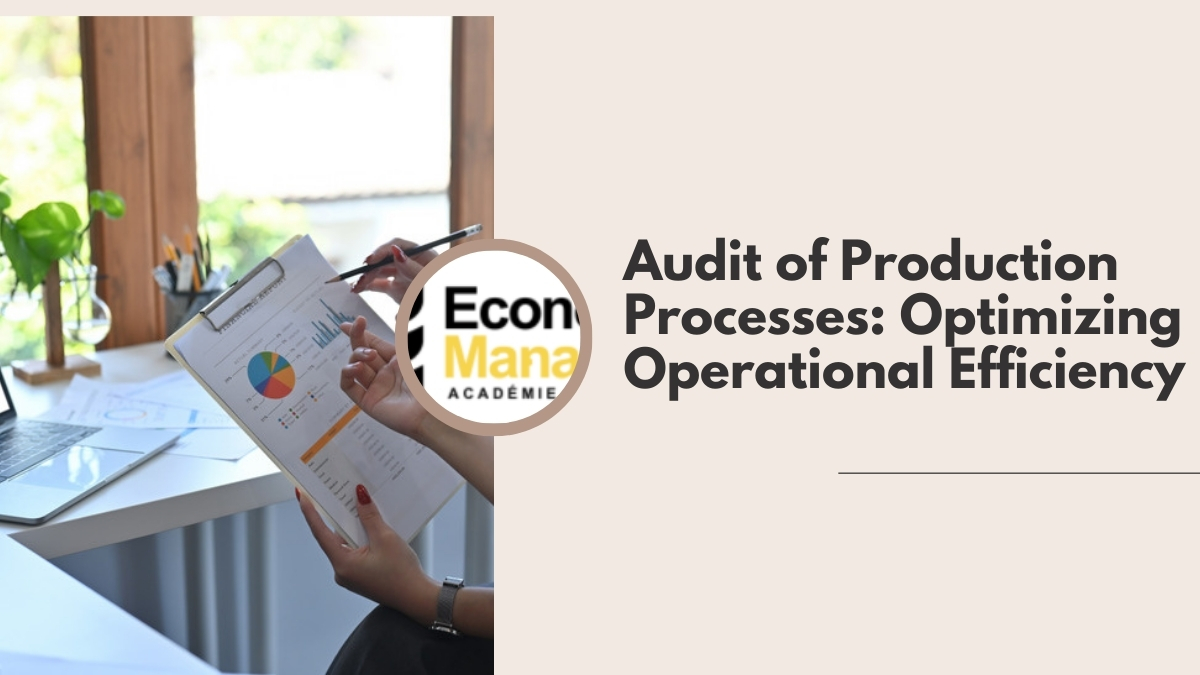Optimizing human capital management has emerged as a pivotal strategy for organizations to thrive. The key lies in recognizing that people are the most valuable assets, and effective management of this capital is essential for long-term success.
This is where the power of a human resources audit comes into play. By conducting a comprehensive assessment of human resources practices, policies, and procedures, businesses can identify areas of strength and weakness, ensuring they get the most from and for their people.
Table de matières
Understanding the Human Resources Audit: A Strategic Tool for Improvement
At its core, a human resources audit is a systematic review and evaluation of all aspects of human resources management within an organization. It serves as a critical tool for businesses to ensure compliance with laws and regulations, assess the effectiveness of policies and practices, identify risks, and ultimately, optimize the management of their human capital. This process involves a deep dive into everything from recruitment and hiring practices to performance management, compensation, and employee relations.
Think of it as a health check for your organization’s human resources function. Just as individuals undergo regular health check-ups to identify potential issues and ensure overall well-being, businesses need to periodically assess the health and effectiveness of their human capital management practices. This proactive approach enables organizations to address any gaps, inefficiencies, or areas of non-compliance before they become bigger problems.
Why Conduct a Human Resources Audit?
- Compliance and Risk Management: With ever-changing laws and regulations governing employment practices, a human resources audit helps ensure your organization remains compliant. It identifies areas where policies or practices may expose your business to legal risks, financial penalties, or reputational damage.
- Performance Optimization: Audits uncover bottlenecks and inefficiencies in your human resources processes that may be hindering performance. By streamlining these practices, you can improve overall operational efficiency and productivity.
- Strategic Alignment: Human resources audits evaluate how well your human capital strategies align with your organization’s overall business goals. This ensures that your people practices support and enhance your strategic objectives.
- Transparency and Governance: Demonstrating transparency in human resources management boosts stakeholder confidence. An audit provides an independent assessment of your practices, assuring stakeholders that your organization adheres to best practices and ethical standards.
- Continuous Improvement: Audits provide a roadmap for continuous improvement. The insights gained help you set meaningful goals, implement targeted solutions, and establish a culture of ongoing learning and development.
Components of a Comprehensive Human Resources Audit
A comprehensive human resources audit should cover a range of key areas to ensure no stone is left unturned. Here’s a breakdown of the critical components to include:
1. Compliance and Legal
- Review employment contracts, policies, and handbooks to ensure they are up-to-date and compliant with labor laws and regulations.
- Assess compliance with wage and hour laws, including minimum wage, overtime pay, and record-keeping requirements.
- Evaluate adherence to health and safety standards, ensuring a safe working environment for employees.
- Examine practices related to equal employment opportunity, affirmative action, and non-discrimination to mitigate legal risks.
- Review immigration and visa processes to ensure compliance with employment eligibility requirements.
2. Recruitment and Hiring
- Evaluate the effectiveness of your recruitment strategies in attracting top talent.
- Assess the efficiency of the hiring process, including time-to-hire and costs associated.
- Analyze selection criteria and practices to ensure fairness and absence of bias.
- Review onboarding processes to ensure a smooth transition for new hires.
3. Performance Management
- Evaluate the alignment of performance management systems with organizational goals.
- Assess the effectiveness of goal-setting, performance evaluation, and feedback processes.
- Identify areas where performance management practices can be improved to drive employee engagement and productivity.
4. Training and Development
- Review training programs to ensure they meet the needs of the organization and employees.
- Assess the effectiveness of development initiatives in building skills and knowledge.
- Evaluate the impact of training on employee performance and retention.
5. Compensation and Benefits</hwśród>
- Analyze compensation structures to ensure internal and external equity, compliance with minimum wage standards, and alignment with market rates.
- Evaluate the competitiveness and attractiveness of your benefits package.
- Assess the efficiency of payroll processes and systems.
6. Employee Relations
- Review policies and practices related to employee relations, including grievance procedures, disciplinary actions, and conflict resolution.
- Evaluate the effectiveness of communication channels and employee engagement initiatives.
- Assess the overall work environment and culture to identify areas for improvement.
7. Technology and Data Management
- Evaluate the effectiveness of human resources information systems (HRIS) and technology tools in streamlining processes and enhancing data management.
- Assess data security and privacy practices to ensure compliance with relevant regulations (e.g., GDPR, data protection laws).
Strategies for Conducting an Effective Human Resources Audit
Now that we’ve explored the components of a human resources audit, let’s delve into practical strategies for conducting one. Here’s a step-by-step guide to help you navigate the process successfully:
1. Define the Scope and Objectives
Clearly define the scope of your audit. This includes determining the specific areas to be covered, such as compliance, performance management, or recruitment. Set measurable objectives that outline what you hope to achieve. Are you aiming to identify compliance gaps, improve efficiency, or enhance employee engagement? Clear objectives will guide your audit process and ensure focused efforts.
2. Gather Information and Data
Collect and review relevant documents, policies, procedures, and data. This includes employee handbooks, contracts, performance data, training records, compensation information, and any other materials pertinent to the scope of your audit. Analyze this information to identify trends, patterns, and potential areas of concern.
3. Conduct Interviews and Focus Groups
Engage with stakeholders across the organization through interviews and focus groups. This provides valuable insights and feedback on the effectiveness of human resources practices. Include employees from different levels and departments to gain a diverse range of perspectives. Ask open-ended questions and encourage honest feedback to uncover areas for improvement.
4. Observe and Assess Processes
Observe human resources processes in action to assess their efficiency and effectiveness. This may include sitting in on performance reviews, attending training sessions, or reviewing the steps involved in onboarding new hires. By witnessing these processes firsthand, you can identify bottlenecks, inefficiencies, or areas where standardization is needed.
5. Analyze and Interpret Findings
Once you’ve gathered data and feedback, it’s time to analyze and interpret your findings. Identify patterns, themes, and areas of strength and weakness. Prioritize issues based on their impact and urgency. For example, compliance gaps or legal risks should be addressed immediately, while improvements to training programs can be planned for the medium term.
6. Develop Actionable Recommendations
Based on your analysis, develop specific and actionable recommendations for improvement. Ensure your suggestions are realistic and achievable, with clear implementation steps and timelines. Involve relevant stakeholders in this process to ensure buy-in and accountability.
7. Implement and Monitor Changes
Work with your team to implement the recommended changes. Communicate the findings and action plan to employees to ensure transparency and engagement. Monitor the impact of these changes over time, using key performance indicators (KPIs) to track progress. Regularly review and assess the effectiveness of the implemented solutions, making adjustments as needed.
Benefits and Impact of Human Resources Audits
Conducting a human resources audit offers a multitude of benefits for organizations, ultimately contributing to their success and sustainability. Here’s a look at some of the key advantages:
- Improved Compliance and Risk Management: Audits help organizations identify and address compliance gaps, reducing the risk of legal penalties and reputational damage. They ensure that businesses stay abreast of changing laws and regulations, protecting them from unforeseen liabilities.
- Enhanced Performance and Productivity: By streamlining human resources processes and practices, audits contribute to improved operational efficiency. This, in turn, enhances overall organizational performance and productivity, helping businesses gain a competitive edge.
- Attract and Retain Top Talent: Effective human resources audits lead to improved employee satisfaction and engagement. By addressing pain points and inefficiencies, organizations create a more positive and supportive work environment, making them more attractive to top talent.
- Strategic Alignment and Focus: Audits ensure that human resources strategies are tightly aligned with the organization’s overall business goals. This strategic focus enables businesses to leverage their human capital effectively, allocating resources where they will have the greatest impact.
- Cost Savings and Efficiency: Identifying and eliminating redundant or inefficient processes can lead to significant cost savings. Streamlined human resources practices also free up time and resources, allowing HR professionals to focus on strategic initiatives.
- Improved Employee Relations and Morale: Through audits, organizations can identify and address issues impacting employee relations. This may include grievances, conflict resolution, or communication breakdowns. By taking proactive steps to improve these areas, businesses foster a positive work environment and boost employee morale.
Best Practices and Tips for a Successful Human Resources Audit
As you embark on your human resources audit journey, keep the following best practices and tips in mind to ensure a successful outcome:
- Involve Key Stakeholders: Engage stakeholders from across the organization, including employees, managers, and leaders. Their diverse perspectives will provide a more holistic view and buy-in for the process.
- Ensure Confidentiality and Transparency: Protect the confidentiality of participants to encourage honest and open feedback. Be transparent about the audit process and communicate findings and next steps to build trust.
- Standardize Processes: Strive for standardization and consistency in your audit approach. This ensures that data is collected and analyzed using uniform criteria, allowing for meaningful comparisons and insights.
- Use Technology: Leverage technology and data analytics tools to streamline the audit process. This can include using survey software, data visualization tools, or HRIS to collect, analyze, and interpret data more efficiently.
- Prioritize Recommendations: Not all findings are equal. Prioritize your recommendations based on their potential impact and urgency. Focus on quick wins to build momentum, while also addressing more complex, long-term issues.
- Plan for Continuous Improvement: View the audit as a continuous process rather than a one-time event. Plan for regular reviews and follow-ups to ensure that improvements are sustained and new challenges are addressed.
Conclusion: Unlocking the Power of Your People
In a world where business success is increasingly driven by human capital, the value of a comprehensive human resources audit cannot be overstated. It serves as a strategic tool for organizations to optimize their most valuable asset – their people. By assessing compliance, performance, and efficiency, businesses can create a workplace environment that is not only legally sound but also engaging, productive, and fulfilling for employees.
Through the audit process, organizations can identify and address gaps, inefficiencies, and risks, ensuring their human resources practices are best-in-class. This, in turn, contributes to improved employee satisfaction, enhanced performance, and ultimately, long-term business success. Remember, your people are your greatest strength, and investing in their well-being and development through regular human resources audits will pay dividends in terms of loyalty, innovation, and sustained growth.







